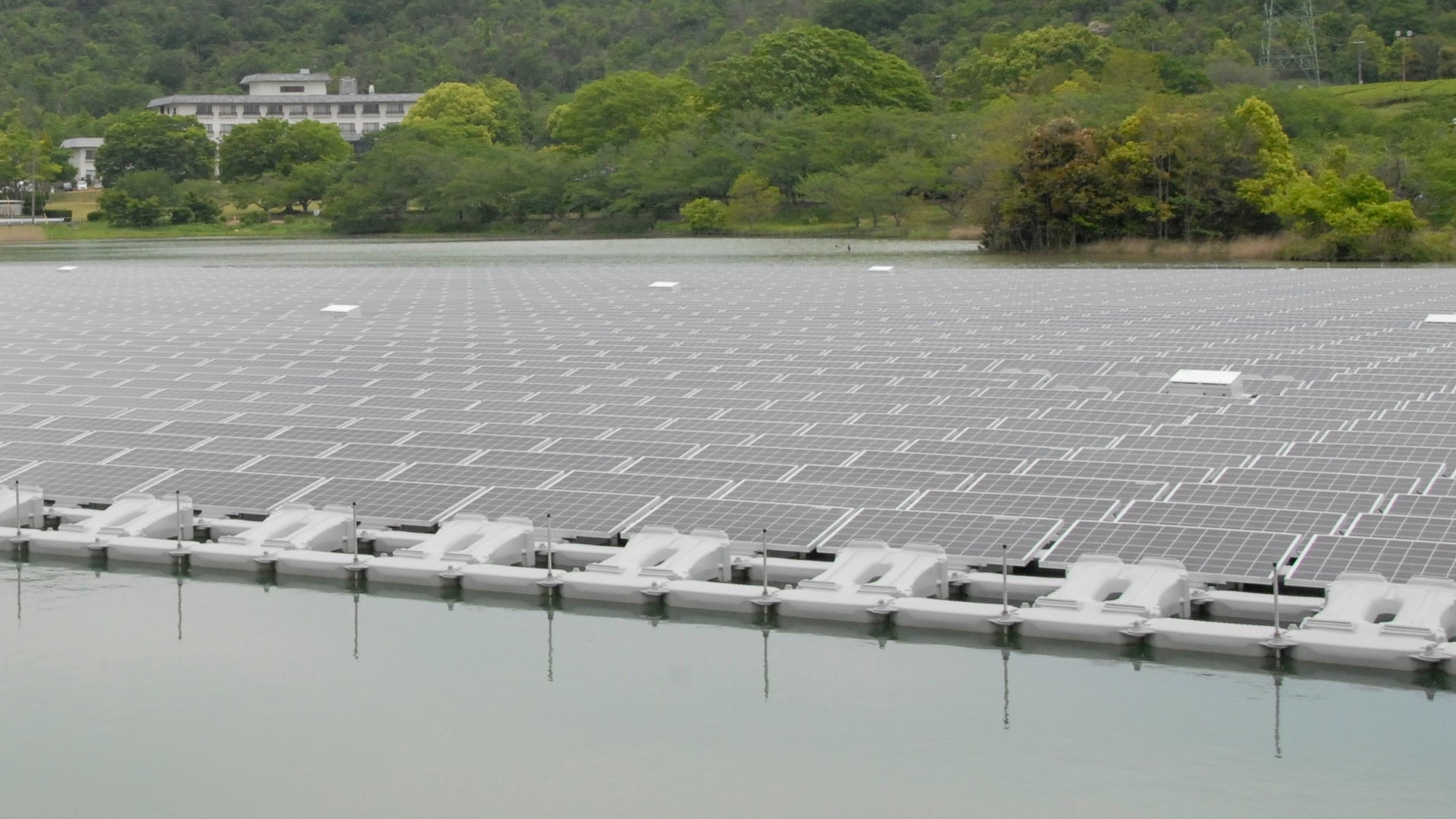Japan is building huge solar power plants that float on water
Unlike coal-fired plants, solar power stations don’t produce smog but they do take up land. Or, at least they did.


Unlike coal-fired plants, solar power stations don’t produce smog but they do take up land. Or, at least they did.
In Japan’s Hyogo prefecture, a solar station was recently launched that floats on a reservoir and will produce about 2,680 megawatt hours per year—enough for 820 typical households. Kyocera plans to build dozens of such stations on reservoirs around Japan, especially in areas lacking available land for utility-scale generation.
With construction completed in late May and operations begun this week, the new installation measures 333 by 77 meters (1,093 by 253 ft) and will sell the energy it produces to Kansai Electric Power in Osaka for about ¥96 million ($780,000) annually, according to the Japan Times. Helpful, as Japan’s energy strategy in the aftermath of Fukushima calls for roughly doubling the amount of renewable power sources in the country by 2030.
It employs nearly 9,100 waterproof solar panels and a float made of high-density polyethylene. It’s Kyocera’s third such installation, the first two being smaller versions launched on ponds earlier this year.
One advantage of floating solar stations is efficiency. The water cools the system and thereby helps it generate power more efficiently (pdf) than if it were on the ground. Such installations also work particularly well on reservoirs. By shading the water, they also reduce evaporation and algae growth, two common concerns with reservoirs.
Kyocera will next launch a particularly large floating solar installation in the Chiba prefecture’s Yamakura Dam reservoir next March, which will generate an estimated 15,635 megawatt hours per year—more than five times as much as the plant that just went online.